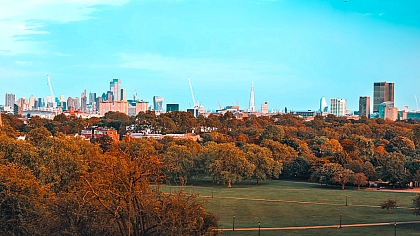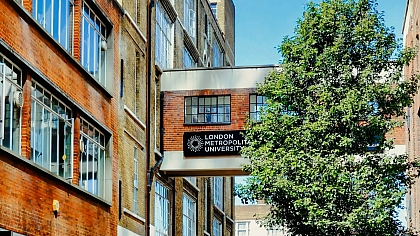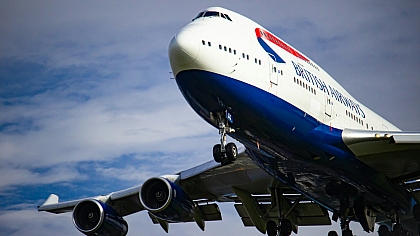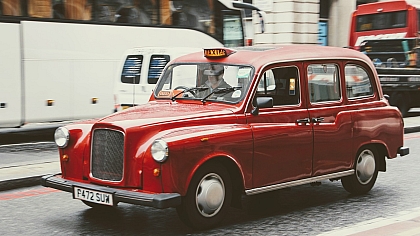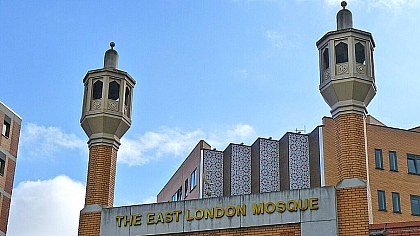
Understanding the Causes of Traffic Congestion in London
Traffic congestion is a pervasive issue in major cities around the world, and London is no exception. With its extensive road network, bustling streets, and millions of residents and tourism, the British capital faces daily traffic woes that affect its residents' quality of life, the economy, and the environment.
To alleviate congestion and improve urban mobility, it is crucial to identify and address the main causes of traffic congestion in London. Discover the multifaceted factors contributing to traffic congestion in London, shedding light on the challenges and potential solutions.
1. Population Density and Urbanization
One of the primary factors contributing to traffic congestion in London is its high population density and urbanization. London is the most populous city in the United Kingdom, with over 8 million residents, and it continues to grow. As people flock to the city for job opportunities and cultural experiences, the demand for transportation services increases. This population density leads to more vehicles on the road, longer commutes, and a greater likelihood of congestion during peak hours.
2. Limited Road Space
London's historical layout poses a unique challenge for addressing traffic congestion. The city's roads and streets were designed centuries ago, and many of them are narrow, winding, and not conducive to the demands of modern traffic. Furthermore, extensive urban development leaves little room for expanding road infrastructure. The limited road space restricts the flow of traffic and contributes to bottlenecks and congestion hotspots.
3. Over-Reliance on Private Vehicles
The overreliance on private vehicles is a major contributor to traffic congestion in London. Many residents and commuters choose to drive their cars, which not only exacerbates congestion but also worsens air quality and environmental problems. While London has an extensive public transportation system, including buses and the Underground, the convenience and perceived necessity of private vehicles remain significant barriers to reducing congestion.
4. Inefficient Public Transportation
While London's public transportation system is extensive, it is not without its challenges. Delays, overcrowding, and occasional strikes can make public transportation less appealing to commuters. The lack of adequate and reliable alternatives to private cars encourages more people to drive, adding to congestion. Improving the efficiency and capacity of public transportation is a crucial step in addressing congestion.
5. Congestion Pricing
London introduced a congestion charge in 2003, which was one of the first of its kind in the world. While it has been effective in reducing congestion within the congestion charging zone, it has also pushed traffic congestion to the outskirts of the city. Additionally, the congestion charge's impact on lower-income individuals and small businesses has been a subject of debate. Striking the right balance between congestion pricing and equitable access to the city remains a challenge.
6. Roadworks and Construction Projects
Ongoing roadworks and construction projects are a common sight in London. While infrastructure improvements are necessary, they often disrupt traffic flow and contribute to congestion. Coordination and planning are essential to minimize the impact of these projects on daily commutes.
7. Commercial and Delivery Vehicles
London's status as a global economic hub means that it sees a constant influx of commercial and delivery vehicles. The need to transport goods within the city can lead to congestion, particularly during rush hours. Promoting alternative delivery methods, such as cargo bikes and off-peak delivery times, can help alleviate this issue.
8. Inadequate Cycling Infrastructure
Cycling has become an increasingly popular mode of transportation in London, but the city's cycling infrastructure is still inadequate. Unsafe cycling conditions and conflicts with motorized traffic discourage some potential cyclists from opting for this eco-friendly mode of transportation. Investing in dedicated cycling lanes and infrastructure can help reduce congestion and improve air quality.
9. Ride-sharing and App-Based Taxis
The rise of ride-sharing services and app-based taxis has introduced new dynamics to London's traffic congestion. While these services offer convenience, they also contribute to increased vehicle traffic on the roads, especially during peak hours. Regulating and incentivizing shared rides or electric vehicles can help mitigate this issue.
10. Environmental Concerns
Traffic congestion in London is not only a transportation problem but also an environmental one. Congestion leads to increased emissions, contributing to poor air quality and health problems for residents. The city has implemented low-emission zones and initiatives to promote electric vehicles, but addressing the environmental impact of congestion remains a priority.
What is the Congestion Charge in London?
The Congestion Charge in London is a traffic management initiative implemented by Transport for London (TfL) to alleviate congestion and reduce pollution in the city centre. It was introduced in 2003 and is applicable in a designated Central London zone. The scheme requires most vehicles to pay a daily fee for driving within this area on weekdays between certain hours.
The main goal of the Congestion Charge is to discourage unnecessary car trips, promote the use of public transportation, and improve air quality. The fee can vary based on factors like vehicle type and emissions, with discounts available for residents and some low-emission vehicles.
The operational hours and charging zones may change, so motorists must stay informed about the latest updates. The revenue generated from the Congestion Charge is reinvested in London's transport infrastructure, including public transit services and road improvements.
Compliance with the Congestion Charge is typically enforced through automatic number plate recognition (ANPR) cameras, and fines are imposed on non-compliant vehicles. However, certain exemptions and discounts are available, such as for electric vehicles and vehicles used by disabled individuals.
Over the years, the Congestion Charge has faced both support and criticism. Supporters argue that it has reduced traffic congestion and improved air quality in the city centre, while critics contend that it places an additional financial burden on motorists and may not have eliminated congestion as originally intended.
In recent years, there have been discussions about expanding the Congestion Charge zone or making it more dynamic to adapt to changing traffic patterns and environmental goals. Overall, the Congestion Charge remains a prominent feature of London's transportation policy, aiming to balance the convenience of personal vehicles with the need for a sustainable and accessible urban environment.
Traffic congestion in London is a complex issue influenced by a combination of factors, including population density, limited road space, overreliance on private vehicles, and inefficient public transportation. While initiatives like congestion pricing and environmental regulations have made strides in reducing congestion and improving air quality, addressing the root causes requires a holistic approach.
Efforts to expand and improve public transportation, invest in cycling infrastructure, promote shared mobility solutions, and manage roadworks more effectively can all contribute to reducing traffic congestion in London. As the city continues to evolve, finding innovative and sustainable solutions to congestion is essential for the well-being of its residents and the vitality of its economy.

